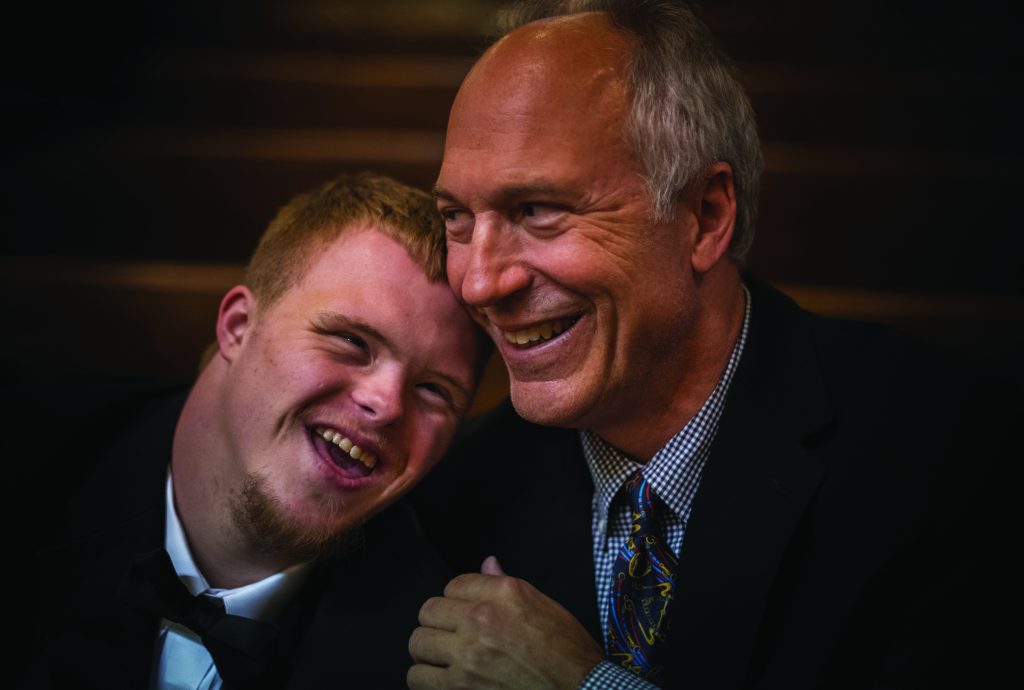

Treebeard Trust was established by Barnaby Wiener, a fund manager, and his wife Cassandra, a lawyer, in 2011 to formalise their personal charitable giving – with a broad mission to create a fairer society and a healthier planet. It now has an endowment of over £20 million.
Barnaby talks about their approach to direct impact investing.
What has been the evolution of the Trust?
I have spent most of my career in the investment world, primarily at MFS Investment Management, where I am both a fund manager and also head of sustainability and stewardship.
My wife and I set up Treebeard Trust over a decade ago. At the time we did not have a particularly clear idea of what we wanted to do, other than to formalise our charitable giving: we wanted to give away more and to do so in a more structured, strategic manner. Initially we only thought of the endowment in financial terms: its purpose was to grow a bigger pot for us to give away. But after three or four years we started to think about how we could use it to leverage our impact, by backing entrepreneurs and ideas through investment as well as grant funding.
Since then we have invested in around forty different projects and enterprises. Initially I was doing it myself in my spare time. But over time it became clear that we needed more resource, and in 2020, we hired Shishir Malhotra as an advisor to help me. He has been a godsend and we now manage the portfolio together.
How is the endowment invested at the moment?
Like many foundations, we look to give away 5% of our assets each year and then invest the rest as impactfully or responsibly as we can. Our intention is to invest 50% of our endowment for impact. We define ‘impact investments’ as direct injections of capital into projects or enterprises which have an explicit social or environmental purpose. These investments can be in the form of equity stakes in mission- driven for-profit businesses, property, debt funding for non- profits or any other instrument.
The other 50% is held largely in public equities, in funds that I manage at MFS. The focus here is on investing responsibly: understanding the social and environmental externalities
of the companies we invest in; engaging with companies to encourage them to manage those issues and avoiding them where appropriate. A number of people talk about impact investment in the context of public equities. We think this is a misnomer. At the end of the day, you are buying shares off a third party, you are not catalysing a solution to a social or environmental problem.
Would we ever invest 100% of our endowment for impact? It’s possible, although certainly not imminent. We still have some way before we reach our 50% target (it’s currently around 30%). And we would need a higher level of confidence that our impact investing strategy works, in financial terms, which only time will tell (these are illiquid investments). But our goal is that in aggregate it will generate a market rate of return – primarily because we want to demonstrate to others that this is a viable investment strategy, not just a variant of grant-making. In which case, 100% is a legitimate long-term aspiration.
What does your current impact portfolio comprise?
We currently have £2.7 million in what we term venture investments; these are equity stakes in early-stage mission-driven companies. We have more than twenty and they cover a wide range of sectors and issues. Examples would include Thrive Therapeutic, which has developed digital tools for tackling mental health; Oddbox, a fruit and veg delivery business selling product which growers can’t sell to supermarkets because it’s misshapen or the wrong size; and Redemption Roasters, a coffee business which creates employment opportunities for ex-offenders.
We then have £2.5 million in property. This includes an investment in Resonance’s National Homelessness Property Fund, but it mainly comprises a house in South London which we bought directly on behalf of an existing charity partner, Lighthouse, for use as their first children’s home. We also have close to £1 million in debt investments; these are all loans or bonds issued by non-profits which are using a commercial model to tackle a social or environmental problem. An example here would be Thera Trust, the nationwide charity supporting adults with learning disabilities, which has issued bonds to finance the purchase of properties on behalf of their beneficiaries.
In terms of sourcing ideas, we were reliant in the early days on intermediaries like ClearlySo, Mustard Seed, Triodos and the Association of Charitable Foundation’s Social Impact Investors Group (SIIG). They still play an important role, but over time investments have increasingly just come to us, as our networks have grown and Shishir has joined the team. Pipeline generation has never really been an issue. The challenge is managing it: sifting through the various opportunities and figuring out which ones are worth pursuing.

Is investing delivering impacts for the foundation that are different to or inaccessible through grant-making?
The first and most obvious point to make here is that it materially increases the scale of our impact. Like most foundations, our grant pot is a small fraction of our endowment. By utilising the endowment, we can put much larger sums to work. All else being equal, we would always rather provide investment than grant funding, because investment capital comes back to us and can be recycled into new projects indefinitely, whereas grant funding is gone forever.
Of course, all else isn’t equal. There are many interventions which do not lend themselves to investment funding because they do not have a revenue model, and grant- making will always be a critical component of our strategy.
But to the extent that social entrepreneurs can develop a revenue model to fund their intervention, they would be mad not to, because it will transform the sustainability and scalability of their project.
The beauty of impact investing is that it opens up a whole new avenue for changemakers. Often there are clear distinctions between our investment-funded and grant- funded partners. But sometimes they overlap. For example, we work with an organisation called Xavier Project, which supports refugees in Uganda and Kenya. We have provided it with grant funding but also zero-interest loans to kickstart a social enterprise that will be self-sustaining by allowing refugees to generate income through farming.
Or take Lighthouse, the children’s home charity I mentioned earlier. We initially provided £40,000 in grant-funding, but the charity couldn’t access investment capital to set up its first home. We therefore agreed to invest £2 million to buy and renovate a property on its behalf. We will lease that property back to Lighthouse on flexible terms – with the security of knowing there is statutory funding for children in care. This is a good example of where investment has both increased the impact we can have and given the charity a sustainable revenue model that it can demonstrate to other investors. Already there are several other foundations which have shown interest in doing something similar.
Do you have any financial return data yet on your impact investments?
With our debt investments we’ve had a few defaults and for obvious reasons we do not charge high interest rates. As
a result, thus far, the return on our debt portfolio has been modestly negative. I’m hopeful that our underwriting skills will improve over time, but realistically I don’t expect these investments to provide much of a return in aggregate. We are willing to accept a lower risk adjusted return in exchange for high impact, and our debt investments are unlikely to account for much more than 20% of our impact portfolio or 10% of the endowment.
The property investments should generate a real return (after inflation) in the low to mid-single digits. That’s below what a commercial property investor would accept, but our risk profile is also lower, because we don’t use leverage, and again, we’re willing to accept a slightly below average return in exchange for high impact.
Our venture investments are the wild card. They will ultimately drive the performance of our whole portfolio, because they will likely be the largest component and they have by far the widest range of outcomes. They are illiquid, long duration and inherently high risk. Many will end up worthless, but a few successes may well be sufficient to deliver a good return (10% plus) for the whole portfolio.
Thus far, we’ve had one exit, Elemental Software, which was acquired in 2021; we have already made over 3x our original investment and depending on how the business performs over the next three years, it could end up being over 6x. A number of our investments have seen a material increase in their value on paper, by dint of raising capital at higher valuations. One of them recently raised at more than 30x the price we initially invested at. It is far too early to declare victory, but I am quietly confident that our venture investments will more than wash their face.

In terms of practicalities, what is helping you to deliver this approach?
We’ve developed from a position of complete chaos to some structure! Now we have Shishir, our impact investment advisor, working for us two days a week. That allows us to do a pretty effective job of sourcing and evaluating opportunities. We have three independent trustees, all of whom bring various expertise in impact investment. We do have an investment policy but it was initially drafted more for legal purposes. We would like to develop something more user-friendly in order to show publicly how we’re thinking about these things.
We’ve had quite a lot of administrative issues around being a charitable trust, given that assets have to be held by the trustees, rather than by Treebeard directly. We are in the process of converting to a charitable incorporated organisation (CIO), a much better legal structure (which didn’t exist when we started).
What would you say to encourage other foundations to invest for impact?
The whole investment industry is under increasing pressure to demonstrate that it is serving society as a whole, and not just a narrow group of stakeholders. If that is true for pensions, insurers and other institutional asset owners, it is doubly true for charitable foundations, whose sole purpose is create public benefit. I think it will become increasingly untenable for foundations to focus 95% of their attention on the 5% they deploy in grants. They will be expected to demonstrate impact across the whole pot.
I would recommend thinking holistically about the foundation’s activity: investment and grant-making are not separate worlds, they are just different forms of capital allocation. The more you look around, the more you will find opportunities to deploy that investment capital for impact. Start small – a lot of foundations have started by allocating only 5% of their endowment to impact – and be willing to make mistakes. You’ll learn from them! You can also learn a lot from others. There is already a thriving ecosystem and no shortage of people willing to help. Finally, don’t be daunted. Yes it’s a challenge, but it’s also an exciting opportunity to transform your foundation’s capacity to be a catalyst for change.

